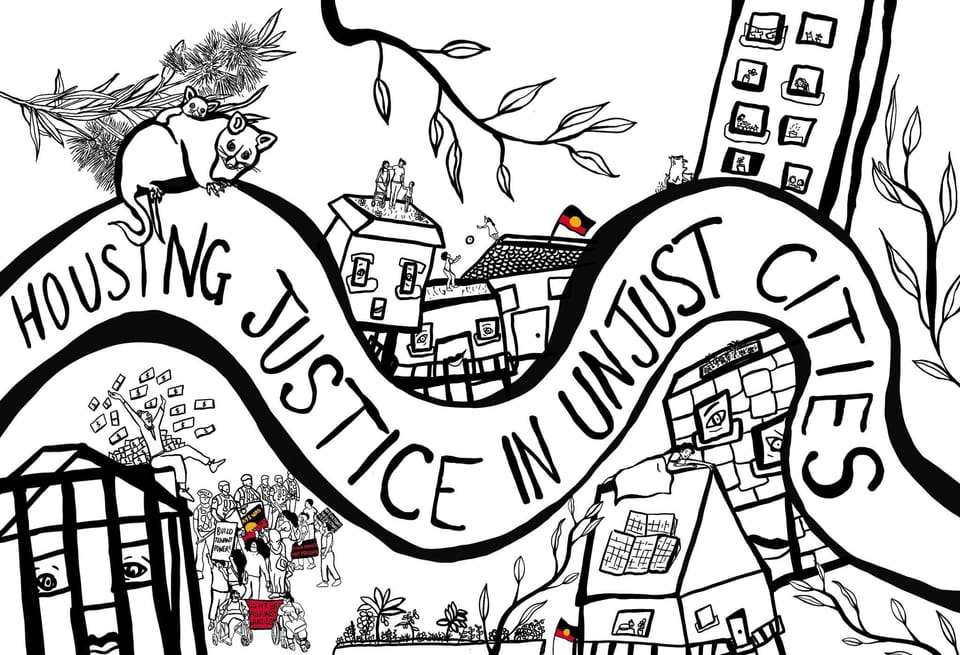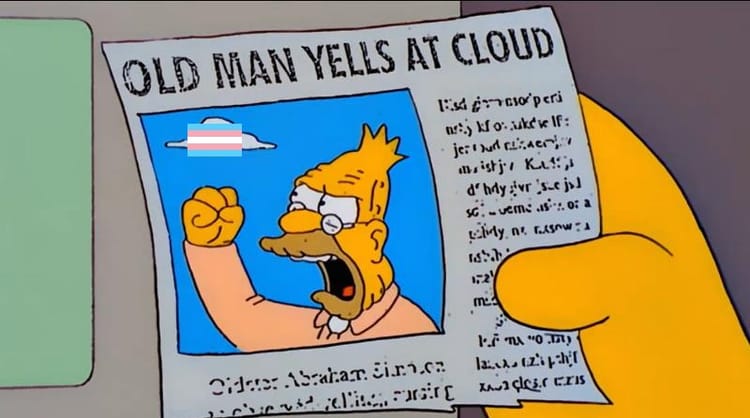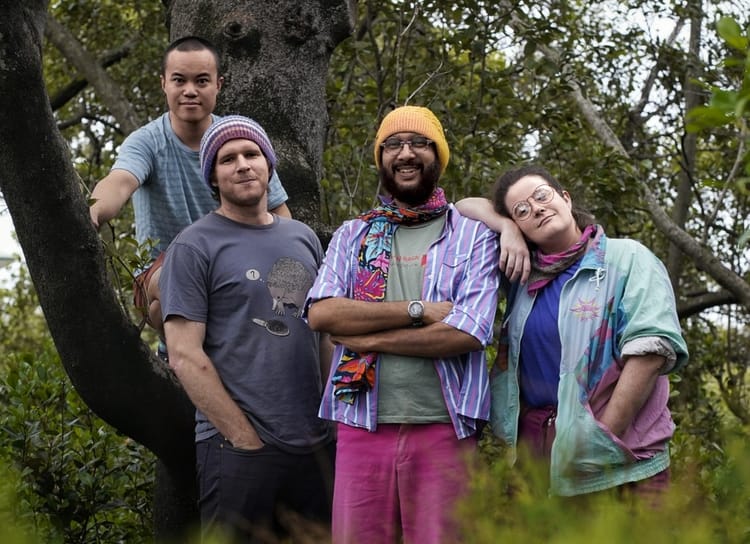How We Helped Stop an Eviction into Homelessness

On Wednesday, 7 February, a woman reached out to my office in Woolloongabba for help. She’d come back to her home in Highgate Hill after being out of town for a while visiting family and attending funerals to find a final eviction notice from the police. It said they would be attending with representatives from her landlord at 11am on Thursday, 8 February to forcibly evict her and her five children.
The home is owned by the State Government’s Department of Housing, but like a lot of Queensland public housing, it’s managed and controlled by a community housing provider (a ‘CHP’) which serves as the family’s landlord.
The mum didn’t know exactly why she was being evicted. She remembered receiving a few complaints last year about minor issues like late-night noise and rubbish piling up. And she remembered that she had missed some kind of tribunal hearing a few weeks ago because she had to attend the funeral of a relative, but she didn’t really seem to understand the implications of that.
The warrant for eviction had been issued by QCAT. Apart from a couple of generic contact numbers for homelessness support services in small print at the bottom of the page, the eviction notice was not accompanied by any info about where the family was expected to go after they were forced from their home. This single mum and her five kids were being evicted into homelessness.

Calling the CHP felt a bit like calling Centrelink. You have to navigate the automated menu – “Press 1 for this, press 2 for that” – and spend a while listening to some mediocre hold music, before eventually getting through to the call centre down in NSW. It often goes through to the answering machine even during office hours (this happens in my office as well – it’s usually a sign that an organisation is short-staffed). When we did get through, the people on the other end of the line genuinely wanted to help, but they couldn’t give us any information about the case over the phone until we’d emailed in a signed authorisation form from the distraught mum. Key decision-makers were obviously quite overworked, so it took a while for the right people to call us back. With the clock ticking until the next day’s 11am eviction deadline, these delays and hurdles were particularly frustrating, but not unusual for an under-funded community organisation.
After a couple of brick wall phone conversations where I tried to emphasise the concerns I had about the situation, the community housing service was still steadfast in its refusal – all avenues to work constructively with the tenant had already been exhausted, and there was nothing anyone could do to stop the eviction proceeding at 11am the next day. The staff I spoke to seemed to feel really bad about the fact that the mum and her kids were being forced out, but it sounded like now that the dispute had gone all the way to QCAT and the tribunal had issued the final eviction notice, it was all too late.
A widespread, systemic problem
You could analyse and discuss this all-too-common scenario from a range of angles. You could write at length about how community housing providers are clearly underfunded and over-stretched. Well-intentioned community workers are struggling to house far more high-needs clients than they have homes for, and elusive tenants who don’t return phone calls or show up to meetings mean overworked CHP staff have less time available to support their other tenants. This particular CHP manages a whopping 900 affordable homes. 90% of their tenants must meet the definitions of ‘high needs’ or ‘very high needs’, but apparently due to funding limitations they only have around 16 staff allocated to this service.
You could also write about broader system failures – about one-size-fits-all impersonal bureaucracies, the lack of trust that many high-needs residents have towards service providers, and the problematic assumptions and generalisations that service providers routinely make about clients. In Queensland, we urgently need more dedicated support services for sustaining tenancies. We have a range of services that engage with rough sleepers, but we also need more housing support workers to help people maintain their tenancies once they do eventually make it to the top of the priority list for a government-subsidised home.
Like I said, this story raises a lot of issues, but I think it’s most constructive to reflect on how we responded to this particular crisis, and how these lessons could be applied to other forced evictions.
What we did next
After it became apparent from conversations with the CHP that it wasn’t going to back down from the forced eviction, the mum and I evaluated our options. At the top of my mind was the fact that if the mum became homeless, it was pretty likely that her kids would get taken off her. So the CHP’s decision to forcibly evict essentially also amounted to a decision to forcibly remove the children from their mother.
In this particular case, the mum’s tenancy breaches were not particularly serious. She had apparently racked up a debt of a few hundred dollars because the CHP had recently increased her rent by about $20/week, but the woman hadn’t understood that she needed to proactively authorise an increase in the automatic rent deduction from her Centrelink payments. There was no suggestion of serious violence or drug dealing at the property. These tenants certainly weren’t the neighbours from hell.
But even if they had been absolutely appalling tenants, evicting this family into homelessness was never going to be the right response. Not only does the stress, upheaval and insecurity of homelessness obviously make it significantly harder for the family to get back on its feet and address the deeper issues that got them to this point, but homeless families represent a significantly higher burden on government and NGO support services. If this mum and her kids ended up on the street, already-overworked community sector staff would have to spend hundreds of hours helping them meet their immediate needs and finding them a new home.
So, with the end of the work day fast approaching, we quickly shot off a letter to the State Government Minister of Housing (without any expectation of a timely reply) and – with the mum’s consent – started organising activists to show up at the house at 9am the next morning to plan an action to resist the 11am eviction.

It was wonderful and inspiring to see how quickly our community mobilised in support of this family. On the back of a Facebook event and a couple of text messages, dozens of people from as far away as Deception Bay were jumping on early trains on Thursday morning to head into 4101 and resist the forced eviction.
I also – with some doubt and trepidation – called a local police sergeant I knew to explain (in general terms) what was happening. I figured that by giving the police a little - but not too much - notice, this would give them time to reconsider their position and back out quietly. Whereas if the officers had turned up at 11am to find a blockade of anti-homelessness activists, they would be more likely to call in backup and escalate the situation, forcing a direct and potentially destructive confrontation.
First thing on Thursday morning, I also texted a few journalists I knew. I didn’t tell them the property address, but flagged the potential for a police confrontation at 11 and that I would let them know ASAP if I thought it was worth them sending cameras out. They were generally quite interested and it seemed likely that multiple TV news crews would attend.
At 8am on Thursday, the police (via the local sergeant I’d contacted) called us to let us know that they were not proceeding with the forced eviction that day and that they had postponed their action until the following Monday. In response, we immediately put the word out through activist networks telling people to stand down and that the action was off. A few people who didn’t get the message still showed up at 9, and we left them to guard the house for an hour while the mother and I went to the CHP office for a meeting (accompanied by Uncle Sam Watson, who generously made time to attend and show his support).
The meeting went as well as could be expected. Long story short, it was agreed that an inspection was to be conducted on Monday and a new lease would be signed. The terms of the new lease weren’t perfect, but obviously it was a lot better than the family becoming homeless and the mum having her kids taken off her.
As an additional bonus, a bunch of activists from the Anti-Poverty Network QLD volunteered their time to help the mum clean up the house over the weekend and deal with some of the smaller issues before the Monday inspection. I think the importance of this can’t be understated. Not only were people willing to rock up to a blockade to prevent the immediate eviction. They were also willing to provide ongoing material support to help the family maintain the tenancy.

What I could have done differently
On reflection, there are a few things I’d do slightly differently if a similar scenario arises in the future. When the police called to say they weren’t evicting on Thursday morning, I immediately spread the word via social media and text message telling supportive activists that they didn’t need to turn up. But perhaps it still would’ve been worth gathering together that morning to share information face-to-face, and give all the people who’d been ready to mobilise at short notice on a weekday the chance to meet each other and build trust.
I also called off the media who were planning to turn up. I did this in part to preserve positive relationships with local journalists. If you cry wolf too often to the media, they are less likely to take you seriously when you suggest to them that a particular issue or incident is newsworthy. However looking back on the series of events, this action and the ensuing response was still definitely worthy of coverage by local journalists, even though there was to be no sensational TV footage of activists clashing with police. I think telling TV news crews that they didn’t need to turn up was the right move, as it helped preserve positive relationships between my office and the CHP, and protected the family’s privacy. But it still would’ve been worthwhile to get a bit of media coverage, because it’s important that other residents are aware of this story and take inspiration from successful anti-eviction struggles.
One other small concern is that I initially published the address of the home in question on a public Facebook event. I did this because we were operating on very tight timeframes and I felt it was important for activists to know exactly where to turn up. I made sure we had the mother’s clear and informed consent before we published their address, and no harm came of it. But I could have instead encouraged everyone to meet at the nearest street corner rather than the house itself as an added measure to help protect the security and privacy of the family.
What can we learn from this act of resistance?
While obviously neither the police nor the CHP will ever admit this, I feel reasonably confident that the threat of an anti-eviction blockade contributed positively to the change of heart and the postponement of forced eviction. This timely application of community pressure and the threat of a negative news story gave the CHP enough encouragement to go outside their standard policies and agree to negotiate a new lease.
I think this is an important reminder of the power of collective action, and the fact that in clearly unjust situations, the Queensland Police don’t want to be seen as the enforcers who kick families out on the street, particularly when there’s media scrutiny.
It also makes visible the fact that if a community decides that it doesn’t consent to an eviction, landlords/property managers might have the power to kick someone out of a home, but they don’t necessarily have the time and resources to keep them out. Historic anti-eviction campaigns – such as those in New York in the early 20th century – mobilised collectively to support evicted neighbours to re-enter their homes. When a landlord dumped all the furniture on the footpath, neighbours held on to it temporarily. After the landlord boarded up the windows, changed the locks and left, neighbours would break into the home to reinstate the evicted residents.
Here in Brisbane, landlords and the police simply can’t afford round-the-clock security to prevent anti-eviction reoccupations if nearby neighbours are on side and refuse to call in the police at the time that residents re-enter.
We as residents hold a lot of collective power. If we stand together against unjust eviction of our neighbours, we can not only prevent individuals from becoming homeless, we can help shift the culture of the various organisations and government departments who play a role in our housing system, and remind landlords that while they hold a great deal of power over the lives of tenants, their power is not unlimited.
I should also take a moment to express my thanks to the community housing service staff who came to their senses and reconsidered the forced eviction. I think it’s important that while we mount strong critiques of the housing system as a whole, and hold individual power-holders and decision-makers responsible for acting unethically, we don’t make the mistake of assuming or acting as though everyone involved in the system is a bad person. In fact, the vast majority of people working in the community housing sector and within government are genuinely good people who are doing their best to achieve positive outcomes within a deeply flawed framework.
Having said that, this experience has taught me that small but important wins are possible if we are willing to take a somewhat antagonistic stance against the most obvious and blatant misuses of power within the housing system. Evicting a family from community housing into homelessness is never the best available solution to concerns about tenant behaviour. We need to mount a strong and multi-faceted resistance against evictions into homelessness. Civil disobedience is a legitimate and effective part of that strategy.






Member discussion